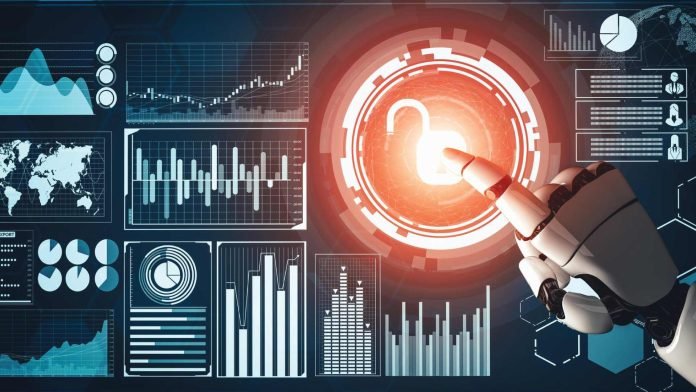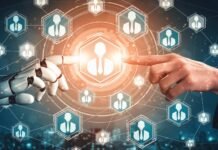Table of Contents
1. AI and ML are Disrupting HR
2. Automating Repetitive Tasks
3. Predictive Analytics
4. Enhancing Employee Engagement
5. Beyond AI and ML: The Power of Intelligent Analytics
6. Customization and Personalization
7. Diversity and Inclusion
8. Case Studies and Real-Time Examples
8.1 Unilever
8.2 Google
8.3 PwC
Conclusion
Rapid developments in artificial intelligence (AI), machine learning (ML), and automation technologies are causing a profound transformation in the workplace. This change in the first place is taking the friction away from the workflow and putting HR on the frontlines. This integration of supercharging technology ensures that HR departments are not only more human but effective in decision-making and helps in creating a productive and engaged workforce. This article takes an in-depth look at the HR industry in the future of work.
1. AI and ML are Disrupting HR
Some of the ways in which AI and ML are transforming human resource management include automation, predictive analysis, and employee engagement. A recent report by Deloitte shows that 41% of HR professionals are currently using AI applications in HR processes, whereas 31% of them declare their intention to use AI technologies within the next two years at the latest.
2. Automating Repetitive Tasks
he use of artificial intelligence in the form of chatbots and virtual assistants is on the rise in the HR industry. These tools can address different operations, including responding to employees’ questions or requests for an interview and conducting interviews, and save HR much time performing more critically significant functions. For example, organizations such as IBM have adopted the use of Watson to automatically process and address employee needs, thus shortening turnaround time and enhancing the general well-being of the workforce.
3. Predictive Analytics
Machine learning algorithms make predictive analytics useful in an HR department for data-driven decision-making. With the help of historical data, these systems can detect tendencies resulting from high or low turnover rates, etc., select potential top performers, or create individual training plans. For instance, Workday People Analytics leverages ML to give organizations’ insights on workforce patterns and potential challenges like attrition.
4. Enhancing Employee Engagement
AI and ML are also useful in improving the engagement levels of employees. Tools like sentiment analysis can help determine the morale of employees by looking into their communication and responses. It helps HR determine when something is wrong so that they can deal with it before it becomes a serious problem. One real-world example is the Microsoft Workplace Analytics product, which leverages data from daily work activities to offer insights into organizational performance and employees’ well-being.
5. Beyond AI and ML: The Power of Intelligent Analytics
However, the future of work in HR exists not only in the combination of AI and ML but also in intelligent analytics. These include aspects such as higher-level data analytics that give more insight into workforce characteristics.
Intelligent analytics helps HR departments with the availability of real-time data to assist them in making faster decisions. For instance, SAP SuccessFactors offers a complete set of analytics tools that allow HR specialists to monitor the results of organizational work in real-time and adjust HR activities accordingly.
6. Customization and Personalization
By incorporating intelligent analytics, HR can tailor experiences for employees that are more relevant. Individualized training and professional development initiatives that are customized based on career preferences and knowledge deficits are being offered with increased frequency. Other companies, like LinkedIn Learning, use intelligent analytics to suggest what courses are relevant to an employee’s professional journey and what courses they have already completed.
7. Diversity and Inclusion
Another facet of intelligent analytics is their ability to make workplaces more diverse and inclusive. Hiring practices, remunerations, and promotion ratios are some of the ways in which bias can be detected by organizations. For instance, Intel has applied predictive data analytics to follow the company’s diversity employment objectives and noted an enhanced workforce diversity ratio.
8. Case Studies and Real-Time Examples
Many companies have adapted the concepts of AI, ML, and intelligent analytics into their HR systems, with measurable benefits.
8.1 Unilever
Unilever practices the use of AI in the screening of candidates before they are called for interviews. This has helped cut the hiring cycle from four months to four weeks. It involves ranking video interviews based on facial expressions, body posture, and words used by the candidate in relation to job performance.
8.2 Google
Google’s People Operations department relies on the company’s machine learning algorithms to predict employee turnover. By collecting data about engagement, performance, and other characteristics of the employee population, Google can identify risks that can lead to talent loss and act preventively.
8.3 PwC
It also addresses how PwC applies intelligent analytics to improve its talent management approaches. Its human capital management tools offer performance, mobility, and talent forecasting information that assist in resource allocation and effective talent management solutions.
Conclusion
The future of work in the HR field appears to be promising as the current and upcoming trends in AI, ML, and intelligent analytics take over more effective, data-focused, and employee-centered practices. With the advancement of such technologies in the future, HR departments will be in a good position to address the challenges facing them in the modern workplace so as to improve organizational performance and productivity among employees. To this end, these advancements should be adopted so that organizations not only improve their HR functions but also ensure that their organizational environment is adaptive, diverse, and ready for the future.
Explore HRTech News for the latest Tech Trends in Human Resources Technology.












